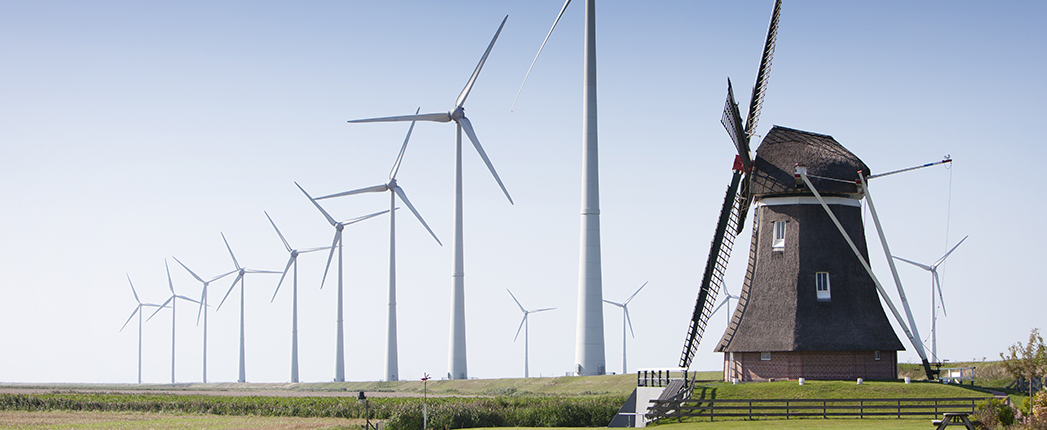
Europe installed 14.7 gigawatts of new wind energy capacity in 2020, 6% less than was installed in 2019, according to statistics released recently by WindEurope. The decrease reflected COVID-19’s impact on the onshore wind sector, but the association expects climate goals in Europe to help drive greater growth in the coming years.
A gigawatt is equal to one thousand megawatts, which are equal to 1 million watts.
“We were forecasting before COVID-19 hit, that we would have a strong year,” Ivan Komusanac, markets and wind energy analyst for WindEurope, said during a March 4 webinar on the report. In the end, he said, Europe’s new installations were roughly 19% less than what the association expected before the pandemic hit. “Even in the pandemic, with all the issues we had, we still managed to have a very strong year in terms of installations, just slightly down on 2019.”
Of that new capacity, the European Union-27 countries accounted for 10.5 GW, with the United Kingdom – which exited the EU as of Feb. 1 – accounting for the remainder of the new wind installation capacity.
“Offshore installations were actually in line with our pre-COVID estimates, but onshore installations suffered the most, and they basically led the decline due to some delays,” Komusanac said. “We had a lot of delays caused due to the restrictions on the free movement of goods and people. We had some issues with the supply chain. We’ve had issues in general with bad weather in some countries, with some delays there through Q3 and Q4.”
He noted a key highlight in 2020 was that even with reduced installations because of the pandemic, onshore wind still played a dominant role. Eighty percent of new installations in Europe came from onshore wind, although installation leader the Netherlands didn’t follow that trend.
“It’s a bit of a surprise that the number one company in terms of installations was not Germany, which it historically always was,” he noted. This year it was the Netherlands, which installed 2 GW of wind. “A big chunk of it came from offshore wind,” he said. The Netherlands installed the most wind power capacity last year, at 2 GW, with offshore wind accounting for 75% of that.
Norway was second with 1.5 GW in new wind installations, all of it onshore. The other leaders in onshore wind installations were Germany and Spain, both with 1.4 GW, and France, at 1.3 GW. Germany posted its lowest year for new wind installations since 2010. Slow installations in onshore wind contributed to Germany’s decrease.
Wind turbines require several types of lubricants, most of which have high performance demands. Gear oil is used for wind turbine gearboxes, which are eliminated in some newer direct drive turbines. Hydraulic fluid is used in the hydraulic systems that control pitch – the angle of the blades in the wind. Grease is used in several wind turbine locations: the main rotor shaft bearing; the yaw bearing, pitch or blade bearings; pitch drive gears; and generator bearings.
According to the report, Europe’s total wind capacity reached 220 GW in 2020 – 195 GW onshore and 25 GW offshore.
Despite its decline in new wind installations, Germany remains tops in capacity with 63 GW. Spain is next with 27 GW, followed by the United Kingdom at 24 GW, France at 18 GW and Italy with 11 GW. Wind energy is also growing in Sweden, which has 10 GW, and Turkey, which has 9 GW.
When including the U.K., wind energy accounted for 16% of Europe’s electricity demand in 2020, up a percentage point from 2019.
Denmark leads in terms of the portion of overall electricity demand provided by wind, at 48%, and offshore installations account for 18%. Ireland is next, with wind energy making up 38% of its electricity demand, all of it onshore. In both Germany and the U.K., wind covers 27% of electricity demand. Offshore accounts for about half of the U.K.’s electricity demand, and around 5% of Germany’s.
Portugal, at 25%, Spain with 22% and Sweden at 20% are the other European countries where wind accounts for at least 20% of electricity demand, all of it onshore.
The association believes Europe could install about 105 GW of new wind energy capacity over the next five years if governments adopt promised measures and aim to reach the target goals set in their National Energy and Climate Plans. About 70-72% of new installations are expected to come from onshore wind.
“Overall it means for the wind energy market that we need to deliver much more than was originally expected, and we need to make sure these installations also happen in the next 10 years, so that we are in line with the [European] green deal objectives,” Viktoriya Kerelska, WindEurope’s head of advocacy and messaging, said during the webinar. “This would put us on pace of installation of around 21 gigawatts per year,” Daniel Fraile Montoro, WindEurope’s director for market intelligence added. “If you look at Europe’s total capacity at the end of last year, it was 220 GW. So this is adding half of what we have today in just 5 years. This is quite a significant undertaking to get that many wind turbines up and running.”